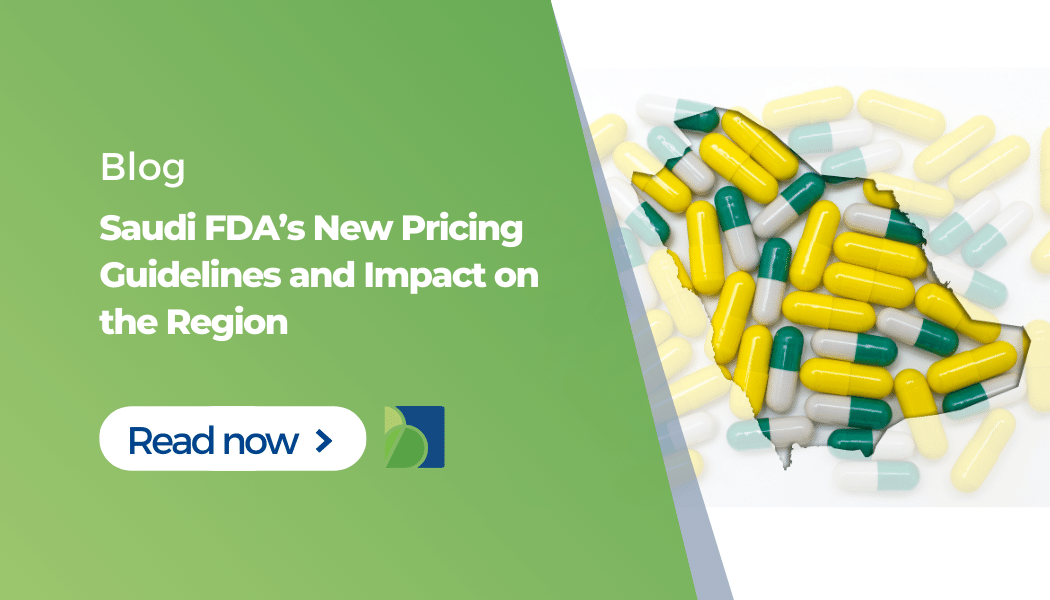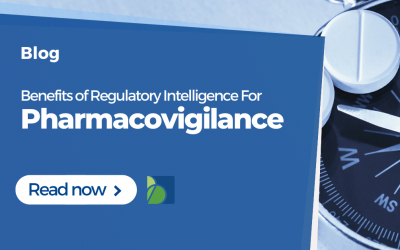In a highly evolving regional pricing environment, Saudi Arabia (KSA) is no exception. The Saudi Food and Drug Authority (SFDA) has been periodically reviewing its pricing mechanisms and criteria so that the country becomes a regional reference for the prices of pharmaceutical products. What followed is a change in the pricing strategy by SFDA and a shift from price takers to price makers.
In this spirit, SFDA issued their new pricing guidelines that were released firstly in 2020 as a draft for review and feedback by the pharmaceutical industry then published earlier this year and implemented on January 14th, 2021.
Changes in the new pricing guideline
The major changes brought by the new SFDA pricing guideline can be summarized as follows:
- Less influence from the International Reference Pricing (IRP) and more influence for the added clinical value and pharmacoeconomic studies;
- Recurrent Repricing;
- Adding pricing incentives for companies that consider localization of their products in Saudi Arabia;
- Adding pricing mechanisms for Biological and Biosimilar products;
- Changing the percentage reduction of the innovator price after entry of the first generic;
- Updated pricing mechanism for Generics;
- New Price Certificate Template that includes 20 international reference countries, instead of previously 30 international reference countries, for benchmark purposes.
Pricing of Pharmaceutical Products
According to the new SFDA pricing guidelines, pharmaceutical products are to be priced taking into account the following:
- Therapeutic Value Add for the product (Value Add);
- Price of alternative products registered in KSA (Comparators);
- Pharmacoeconomic Studies (PE);
- Ex-factory Price of the Manufacturer[1] and Ex-factory to the countries where the product is marketed (Ex-f in its local currency);
- Wholesaler price in the COO[2] (WSP in its local currency);
- Price to Public in the COO and the countries where the product is marketed (PP);
- Proposed Price to KSA (Cost, Insurance & Freight price i.e. CIF price in COO currency); CIF price to all countries where the product is marketed according to the official price certificate template. The price certificate validity has to be 6 months from the date of issuance;
- The price of the product in the adopted price references.
Pricing of Chemical Products
- The price reduction in percent (%) of innovative chemical products upon entry of the 1st generic becomes 25% (instead of the initially proposed -30% by SFDA). The 25% price reduction applies to all strengths and pack sizes;
- The Generic sequence pricing model, which was removed from the draft guideline version, is now back with the final adopted version. Generics will be priced according to their sequence of market entry:
- 1st generic: maximum 70% of the innovator price (rather than initially proposed 50% of innovator price);
- 2nd generic: maximum 65% of the innovator price;
- 3rd and following generics: maximum 60% of innovator price.
Pricing of Biological Products
- The percentage price reduction of innovator biological products upon 1st biosimilar entry is 20% (i.e. remains the same);
- Biosimilar sequence pricing is also back to the adopted version. Biosimilars will be priced according to their sequence of market entry:
- 1st biosimilar: maximum 75% of biological product price;
- 2nd biosimilar: maximum 65% of biological product price;
- 3rd biosimilar and all others following the 3rd biosimilar: maximum 55% of biological product price.
Repricing Frequency and Related Rules
Price reduction upon re-pricing should exceed 30%. Price reduction upon re-pricing should not exceed 30%. SFDA may review the price 2 years after the product registration in the following cases:
- Expensive Products;
- Products that require further evidence of health outcomes.
SFDA may review the price of the product anytime after its registration in the following cases:
- Upon reviewing the prices of the products that fall in the same therapeutic group;
- Upon price reduction in COO or countries where the product is marketed;
- Upon company request.
Renewal-related Repricing
Products that have a public price of less than 30 SAR will not be repriced upon renewal.
- Upon 1st renewal of the innovator product (chemical) that has a generic registered in KSA, the price difference between the generic and the innovator should be at least 10%
- Upon 1st renewal of the innovator product (biological) that has a biosimilar registered in KSA, the price difference between the biosimilar and the innovator should be at least 15%
- Upon renewal of the innovator products (chemical or biological) when their generics or biosimilars have been registered/marketed for at least 10 years, then the SFDA reviews the prices of the available generics and biosimilars such that they do not exceed the price of the innovator product.
Variation-related Repricing
The SFDA reviews the prices of the products upon the change in the MAH (marketing authorization holder). The price for the registered innovator product of a foreign company (whether chemical or biological) will be fixed after transferring all steps of full manufacturing to inside Saudi Arabia and marketing the product for a period that does not exceed 7 years.
General Rules
There will be no reduction in the price of a product within 2 years from the date of its last price reduction. Price appeals can be submitted within 60 days from the date of notification with the new prices
Pricing before Submission of the Registration File is possible, however:
- Price appeals to the granted price are excluded;
- The price will be adopted by the SFDA if the product was registered within 9 months from the date the price was granted.
Regional Impact of the new pricing guideline
SFDA pricing regulations have an impact on MENA countries that consider in their regulations KSA as a benchmark.
The new SFDA pricing guidelines will have an impact on the pricing of existing registered products in KSA (upon renewal or relevant variation), of new products planned to be registered in KSA, and, regionally, in countries that consider KSA as a benchmark for pricing.
In summary, the new SFDA pricing guidelines carries both risks and opportunities:
| Opportunities |
Risks |
| SFDA reduced the international reference pricing countries to 20 countries instead of 30 countries and did not state that they will strictly select the lowest price among the reference countries. |
Upon renewal or relevant variation for innovators (chemicals) with existing generics, SFDA may decide to further reduce the price to -25% rather than -20% according to the new SFDA pricing regulations. |
| More possibility.es to appeal as per the new guideline |
Upon entry of a generic to an innovator product (chemical), the innovator product price will be reduced by -25 % in KSA |
| SFDA cannot reduce the price twice within 2 years from the last repricing. |
New prices in KSA should be reported to Jordan and Bahrain after 4 months from the implementation date in KSA as per the pricing regulations in Bahrain and Jordan. |
| Repricing cannot lead to more than a 30% price reduction. |
New prices in KSA are reported by SFDA to GHC (Gulf Health Council) and become therefore visible to all the other 6 GCC member states. Hence, the new SFDA prices (being usually the lowest in the GCC region) lead to a new GHC unified price within 6-12 months. |
| No restrictions on the number of price appeals.
|
KSA is also a benchmark for other countries such as Morocco, Egypt, Iraq, and Lebanon. Hence, it is expected that the price reductions or outcomes because of implementing the new pricing guidelines in KSA will affect other countries outside the GCC region. |
The new SFDA pricing guidelines, added to the MENA region’s pricing modalities, come to set an even more stringent pricing environment.
Pharmaceutical companies serving the region need to be clear on the existing pricing regulations and policies to define/redefine pricing strategies with anticipated impact and outcomes, that aim as well to maximize patients’ benefit and access to their treatment.
If you want to get more information on this or other Regulatory topics related to the MENA region, contact us!
[1] The Manufacturer country is the country where the product is manufactured in its primary dosage form (ex: tablets, capsules, etc.)
[2] COO stands for the country of origin: The country of origin is the country that issues the CPP.












